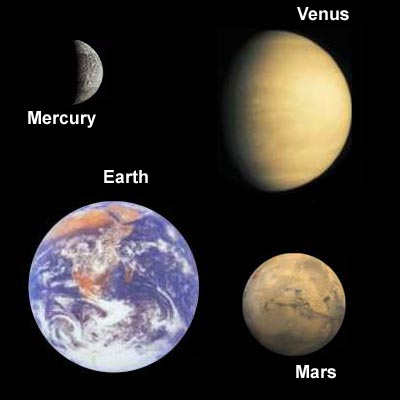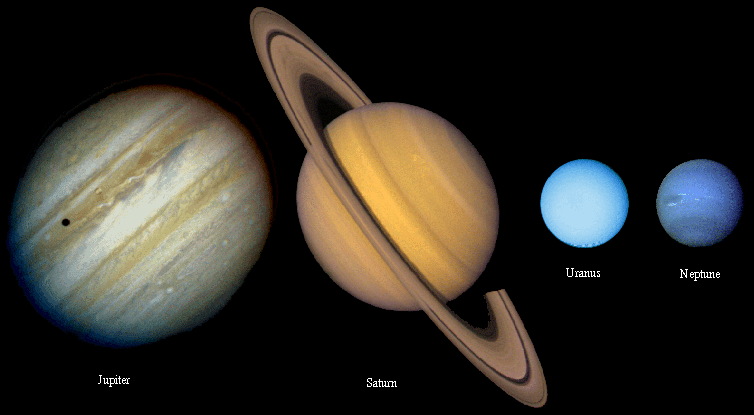

The Venus Transit 2004
... Brief InfoSheet C1
Our Solar System and its members
Venus is a member of a collection of celestial objects which is called the Solar System. To date, we know eight other major planets, dozens of moons, thousands of minor planets, myriads of comets and meteoroids and in addition, interplanetary dust which circle around a central star named the Sun. The Solar System extends over at least 25,000 million kilometres in space.
The Solar System was once regarded as the largest and central part of the Universe. But today we know it is just a tiny speck compared with the rest of the Universe.
Compared to the Sun, Venus and the other planets are relatively cold and only visible by reflected sunlight. To observers on Earth, both Venus and Mercury show phases like the Moon, because their orbits lie inside the Earth's orbit. So Venus and Mercury are called inferior planets. At 243 days, Venus has the longest rotation period; the shortest is Jupiter's at 9 hours 55 minutes.
Mercury, Venus, Earth, and Mars are called terrestrial (Earth-like) planets. They have solid surfaces, are all basically spheres of rock with iron cores, are of similar size (their diameters range from 5000 to 13.000 km), and they have quite a high mean density. The terrestrial planets possess few, if any, satellites and all of them are relatively close to the Sun.

Terrestrial planets and their sizes
The planets from Jupiter to Neptune are called Jovian (Jupiter-like) or giant planets. They differ dramatically from the terrestrial ones. They are all considerably larger than the Earth in both radius and mass. Most possess well-developed families of satellites. In fact, Jupiter and Saturn with their moons are nearly like miniature solar systems.
Planetary Orbits
Looking down on the north pole of the Earth, we can say that the planets revolve around the Sun in a counter-clockwise direction. The orbital velocities of the planets range from about 48 km/s for Mercury to 5 km/s for Pluto. The orbits of all the planets (except Pluto) lie very close to the plane of orbit of the Earth (the "Ecliptic").
Although all planetary orbits are elliptical, most of them are almost circular. Mercury has the shortest period of revolution (about 88 days), and Pluto has the longest (about 248 years).
Using Danish astronomer Tycho Brahe's (1543-1601) extended observations of Mars' orbit, German astronomer Johannes Kepler (1571-1630) published his famous three laws of planetary motion. They were one of the main tools which opened the door to the age of modern astronomy; the other was the invention of the telescope by Galileo Galilei nine years later and its use for astronomical research and observation.
Want to know more?
This topic is discussed in a more detailed way in the associated Extended InfoSheet.
Back to the List of Brief InfoSheets.

